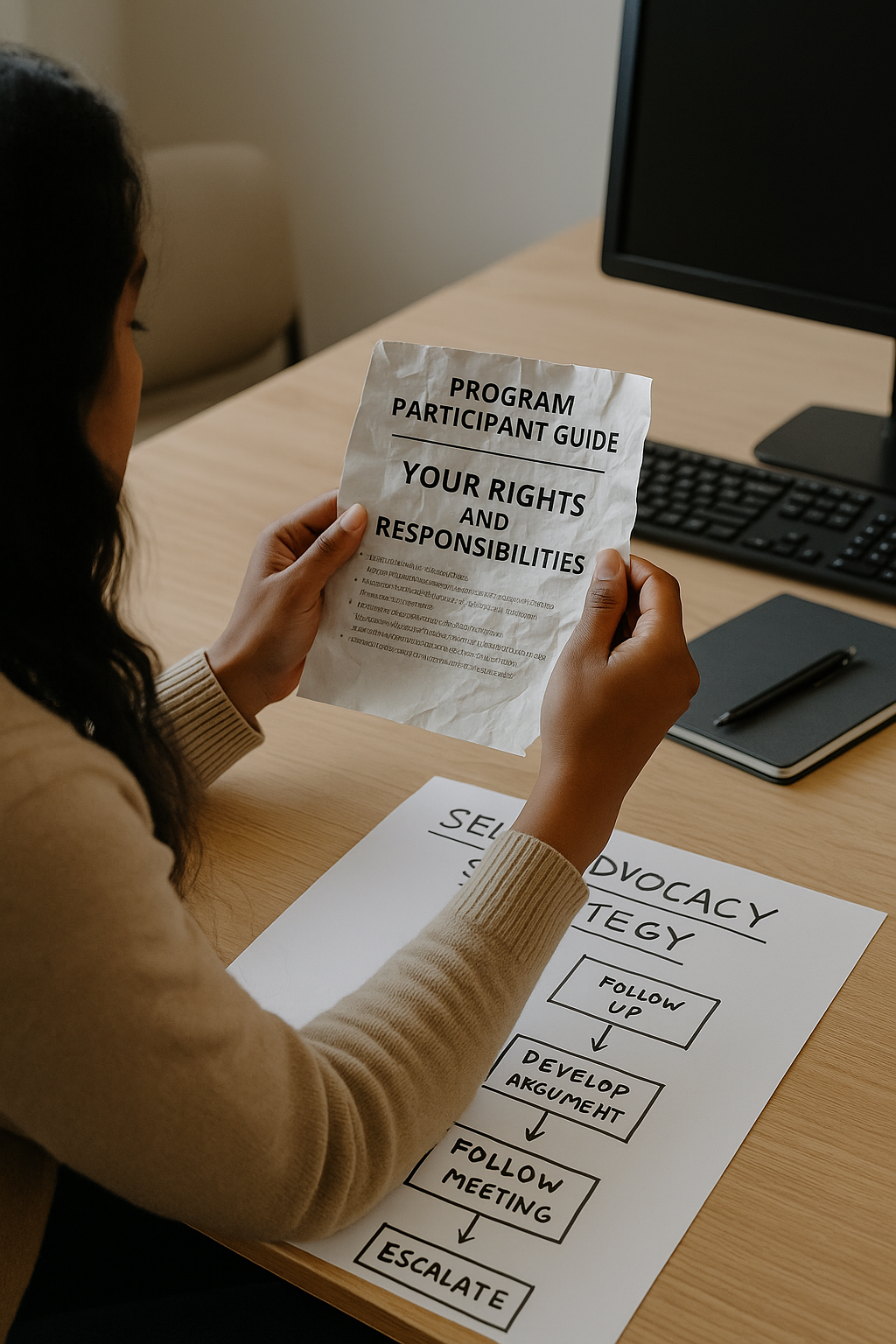Strategic Self-Advocacy: When They Give You a Maze Instead of a Map
They don’t tell you that to survive a system, you’ll need a second self.
The first one—the tired one, the honest one, the one that’s already holding too much—won’t cut it. So you build another version. One that speaks their language. One that remembers what date you called and who you spoke to. One that doesn’t cry in meetings, no matter how hard they try to make you.
This version becomes your advocate. And that advocate? She’s exhausted. Not because she’s weak, but because she was never meant to do it alone.
Strategic Self-Advocacy isn’t what they teach you in service settings. It doesn’t sound like “how to raise concerns respectfully” or “how to be a good participant.” It’s quieter than that. More deliberate. It’s what happens when people get tired of screaming and start diagramming.
It’s pressure applied precisely. It’s documenting what isn’t being said. It’s using the institution’s own language against itself—not to flatter it, but to expose its contradictions.

You’ll know you’re in strategic territory when:
- Emails start getting copied to decision-makers.
- The emotional labour gets replaced with timelines, logs, and citations.
- The system gets visibly nervous—because suddenly you’ve got receipts, and you’re not asking for favours, you’re setting expectations.
From Method to Movement
This isn’t a philosophy. It’s a method. A living one.
It doesn’t belong to any one discipline, diagnosis, or demographic. It was shaped by necessity—in clinics and classrooms, housing offices and tribunal waiting rooms, in meetings where the notes never matched what was said.
The SSA™ Handbook doesn’t give you a script. It gives you scaffolding. So you can build your own strategy, in your own language, on your own terms.
Because this system will always underestimate you—until it can’t.
